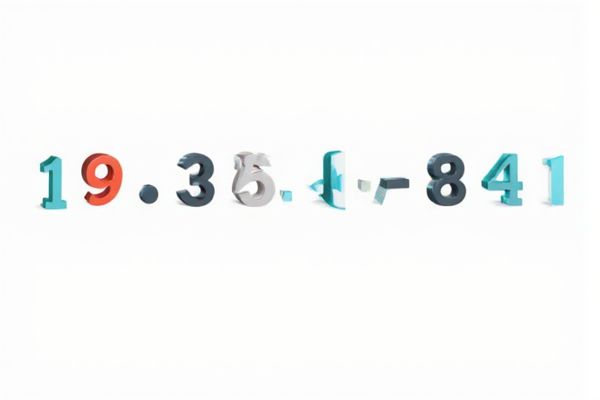
Discover the simplicity of creating unique random letter sequences with our online generator tool designed for fast and accurate results. Customize your output by selecting the desired number of letters and generating endless combinations instantly. Experience seamless usability and reliable performance tailored to meet your sequence generation needs.
Online tool for random sequence generator letters
We have prepared several sample lists for the random sequence generator, ready for you to use and randomize. You can also enter your own custom list for complete flexibility. With just one click, the generator provides a randomized list and selects one value for immediate use.Data Source
Single Result
Multiple Results
Introduction to Random Sequence Generator Letters
Random sequence generator letters produce unpredictable strings of characters used in cryptography, simulations, and testing applications. These generators rely on algorithms or physical processes to ensure each letter's distribution is statistically random, enhancing data security and algorithm robustness. Their applications span programming, password creation, and system validation where unbiased randomization is critical.
Importance of Randomness in Letter Generation
Randomness in letter sequence generation is critical for cryptographic security, ensuring unpredictability and preventing pattern recognition that could lead to data breaches. High-quality random letter sequences are essential in password creation and secure communication protocols to maintain confidentiality. Algorithms designed for letter randomness improve robustness in simulations, gaming, and statistical sampling by eliminating bias in data sets.
Common Applications for Random Letter Sequences
Random sequence generators for letters are commonly used in cryptography to create secure passwords and encryption keys that are difficult to predict. These sequences also play a crucial role in software testing by providing diverse input data to validate algorithms and ensure robustness. Furthermore, random letter sequences are essential in research fields like linguistics and psychology for experiments involving language processing and cognitive function.
Algorithms Used in Generating Random Letters
Algorithms used in generating random letters primarily rely on pseudorandom number generators (PRNGs) such as the Linear Congruential Generator (LCG) and Mersenne Twister to produce uniformly distributed indexes mapped to alphabetic characters. Cryptographically secure generators like Fortuna and ChaCha20 PRNG enhance randomness quality for security-sensitive applications by employing complex state management and entropy pools. Additionally, true random number generators (TRNGs) utilize physical processes like electronic noise or quantum phenomena to generate non-deterministic sequences of letters, ensuring higher unpredictability in outputs.
Input Parameters and Customization Options
Random sequence generators for letters offer flexible input parameters including sequence length, character set selection (uppercase, lowercase, or mixed alphabets), and the option to exclude ambiguous characters like 'O' and 'I'. Customization options often extend to specifying character frequency distributions, defining custom alphabets, and setting seed values for reproducibility in applications such as cryptographic systems and randomized testing. These parameters ensure tailored outputs that meet specific requirements for randomness, security, and pattern avoidance.
Security Considerations in Letter Sequence Generation
Secure random sequence generators for letters rely on cryptographically strong algorithms to prevent predictability, ensuring resistance against reverse engineering and brute-force attacks. Proper entropy sources, such as hardware-based randomness or secure pseudorandom number generators (CSPRNGs), are essential to maintain unpredictability in letter sequences. Failing to implement robust security measures increases the risk of pattern discovery, exposing sensitive systems to potential vulnerabilities and unauthorized access.
Online Tools for Generating Random Letter Sequences
Online tools for generating random letter sequences utilize advanced algorithms to produce unpredictable and unbiased combinations of characters, essential for cryptographic applications, secure passwords, and data analysis. These generators often allow customization options such as sequence length, character sets (uppercase, lowercase, alphabets), and exclusion of ambiguous letters to enhance usability and security. Web-based platforms provide instant, reliable random letter sequences with API support for integration into software development and testing workflows.
Comparison: True Random vs Pseudorandom Sequences
True random sequence generators rely on physical processes such as radioactive decay or atmospheric noise to produce unpredictable letter patterns, ensuring high entropy for cryptographic and scientific applications. Pseudorandom sequences, generated by deterministic algorithms using an initial seed, offer faster output and reproducibility but may exhibit periodicity and lower randomness quality. Security-critical systems favor true random generators for enhanced unpredictability, while pseudorandom generators suffice for simulations and non-sensitive data processing.
Best Practices for Reliable Random Sequence Generation
Ensuring high-quality random sequence generation involves using cryptographically secure pseudorandom number generators (CSPRNGs) to avoid predictable patterns and enhance entropy. Implementing hardware-based entropy sources, such as thermal noise or quantum phenomena, further strengthens randomness quality. Regularly testing sequences with statistical randomness tests like DIEHARD or NIST SP 800-22 validates the reliability and uniform distribution of generated letter sequences.
Future Trends in Random Letter Generation Technologies
Future trends in random letter generation technologies emphasize advancements in quantum computing and AI-powered algorithms to enhance entropy and unpredictability. Integration of machine learning models facilitates dynamic pattern recognition, reducing bias in generated sequences for applications in cryptography and secure communications. Emerging hardware solutions based on quantum random number generators promise significantly higher speeds and true randomness compared to classical methods.
 azrandom.com
azrandom.com